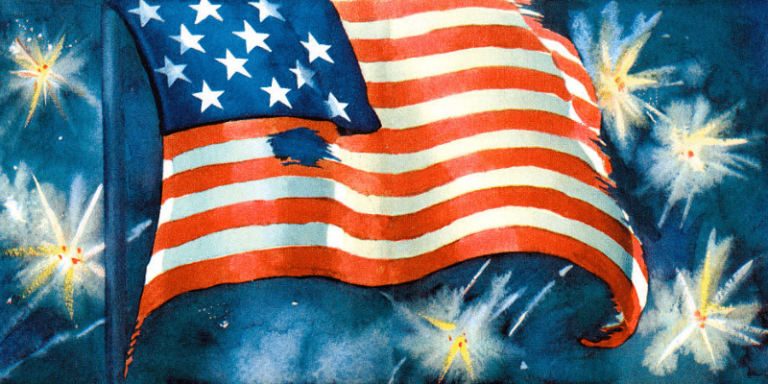The Star-Spangled Banner: The Flag Behind the Anthem
It was this flag that Francis Scott Key saw by the dawn’s early light.
By: Kelli Ballard | February 20, 2021 | 550 Words

The American flag flying over Fort McHenry (Photo by GraphicaArtis/Getty Images)
The Star-Spangled Banner is not just the name of our National Anthem, it is also the name of the flag that inspired Francis Scott Key to write the poem that turned into America’s song. In July 1813, Major General George Armistead was the commander of Fort McHenry during the War of 1812. He went to the commander of Baltimore defenses to request a huge flag.
The Making of the Star-Spangled Banner
The commander approved the request and Armistead went to work. He hired a 29-year-old widow and professional flag maker, Mary Young Pickersgill. The plans called for a flag measuring 30 by 42 feet. It was to have 15 stars and 15 stripes to represent each of the states at that time.

Amelia Fowler works to restore the original Star Spangled Banner in 1914. (Getty Images)
Mary, along with her daughter, three nieces, and a 13-year-old indentured servant, spent ten hours a day for six weeks working on the flag. At first, they worked on the flag in Mary’s home, now the Flag House private museum, until they needed more room to work and moved the project to Claggett’s brewery across the street. The finished flag was delivered to the fort on August 9, 1813.
For her efforts, Mary was paid $405.90. She was also hired to make a smaller version, known as a storm flag, for $168.54. This smaller flag was the one that was actually used during the battle and the larger one was raised the next morning after the battle was won.
The Path of the Flag
The Armistead family ended up in possession of the Star-Spangled Banner. After Fort Henry’s commander died, his wife, Louisa, inherited it. Historians credit her with coming up with the idea of giving away pieces of the flag in her husband’s memory to soldiers who had defended the fort while serving under his command.

(Photo by Heritage Art/Heritage Images via Getty Images)
Over the years, the family continued the tradition of giving away pieces of the flag until 1880, with Armistead’s grandson giving away the last piece. A search has gone on for decades to find these missing pieces. Some are owned by the American History Museum while others are probably in private collections. There is still one star that has never been found. “There’s a legend that the star was buried with one of the soldiers from Fort McHenry; another says that it was given to Abraham Lincoln,” said Kathleen Kendrick, the curator for the Star-Spangled Banner preservation project. “But no real evidence has surfaced to support these stories, and the true fate of the star remains one of the Smithsonian’s greatest unsolved mysteries.”
The flag eventually made its way to the Smithsonian, but it’s smaller than the original size and damaged from years of use and from the pieces being divided up. In 1914, efforts were put underway to restore it, starting with the canvas backing that had been added in 1873. The museum hired Amelia Fowler to restore it, and with the help of ten needlewomen, they finished the project in eight weeks. For her efforts, Fowler was paid $1,243.
Two centuries later, and the flag that inspired America’s National Anthem has survived and can still be viewed.
















